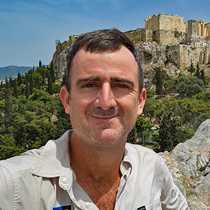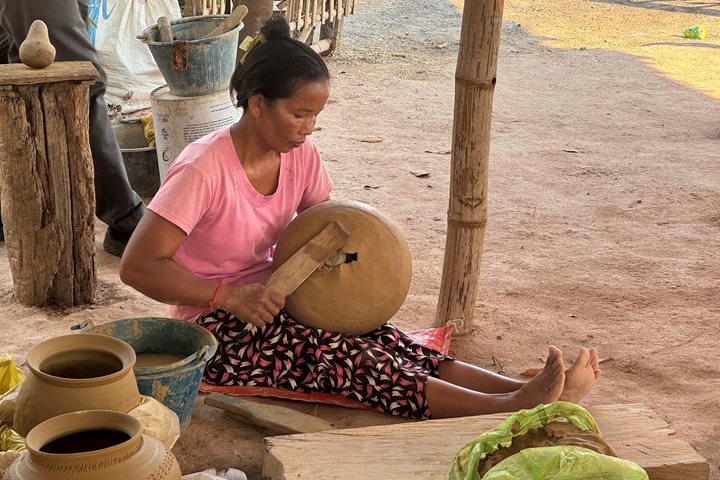After two days exploring the rhythms of rural life along the Mekong and Tonle Sap Rivers, this morning we approached the Cambodian capital in the cool morning air. Legend holds that Phnom Penh was founded in the 14th century, near where the eponymous Lady Penh recovered sacred statues, one of Buddha and the other of Vishnu. While only one of several post-Angkorian capitals, Phnom Penh’s location at the confluence of the Tonle Sap and Mekong Rivers gave it a strategic advantage over trade and communication routes in the lower Mekong basin.
Once ashore this morning, we experience another form of local transportation – the cyclo. This design was invented in 1939 and was popular during the Colonial Era, but they are not so common today. Taking a comfortable seat in front of our driver, we headed out into the traffic stream of Phnom Penh and glided along the waterfront in an elongated column. We passed hotels, bars, and restaurants on one side, with the Tonle Sap promenade and palm trees on the other. The first stop on our morning excursion was the Royal Palace. Built during the French Protectorate in the 1860s, this permanent brick and mortar structure replaced an earlier wooden residence that King Norodom occupied during his reign. Today, however, the palace is rarely occupied by the Cambodian king. After seeing the Silver Pagoda, which houses the kingdom’s most treasured icons and treasures, we headed across town to Wat Phnom. This small hill is where Lady Penh is said to have founded a shrine to house the sacred images she pulled from the waters. A giant white stupa stands tall above the hill, around which Theravada, Mahayana, and animist shrines populate the slopes. Another monument on the south side commemorates the retrocession of the northwest provinces to Cambodia from Siam.
The afternoon took on a more somber tone as we visited Tuol Sleng and Cheung Ek, two memorials to the many Cambodians who died during the Khmer Rouge regime. The regime’s objective was to destroy Cambodian culture and completely re-engineer society into a classless, rice farming peasantry, and the atrocities that occurred during Cambodia’s darkest hour must surely go down as one of the most misguided episodes in human history. While this is shockingly difficult to process and seems jarring juxtaposed alongside the warm and friendly people we encountered, it is an essential component for any understanding of the Khmer people.
In the afternoon, we returned to the ship, and we cast off to cruise along the waterfront after sunset. To finish our day, we once again celebrated the resilience of Cambodians and their rich culture with a traditional dance performance by Cambodian Living Arts. This social enterprise was formed to preserve the Khmers’ intangible cultural heritage, which was nearly lost, and to foster arts and creativity in the generations to come.







